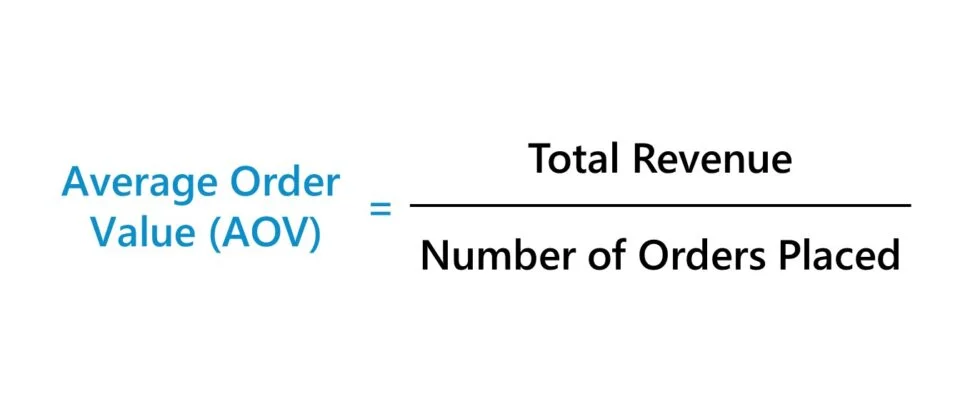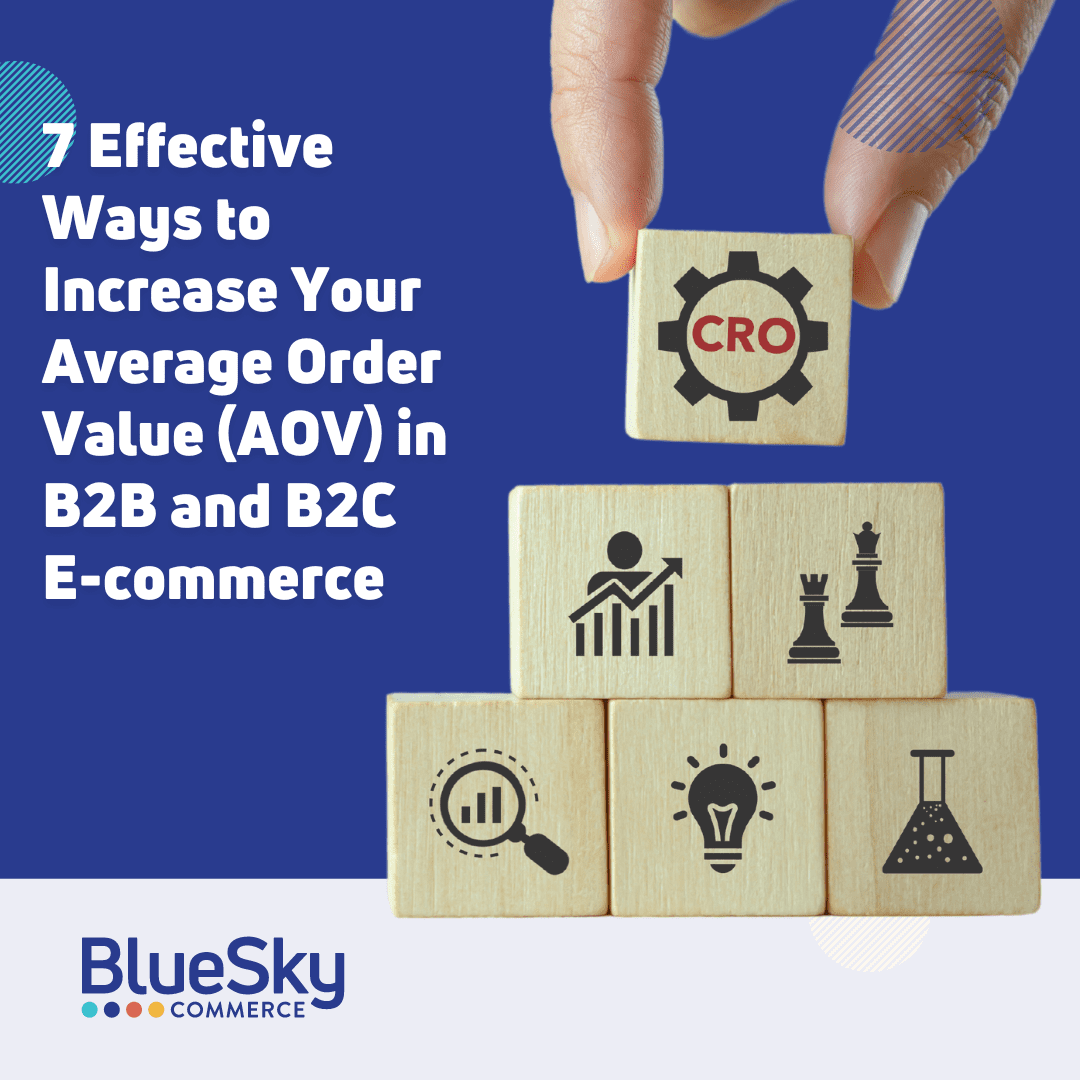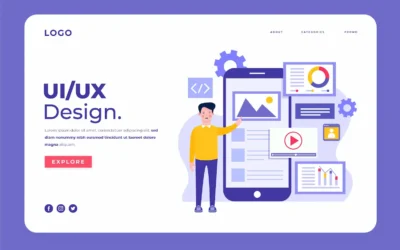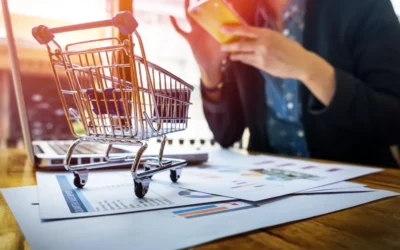In the competitive B2B and B2B2C e-commerce landscape, businesses are grappling with slower sales growth and the need to find new revenue streams. Leaders responsible for e-commerce strategies must focus on innovative approaches to recover lost revenue and drive growth. One of the most effective methods is by increasing your Average Order Value (AOV).
Average Order Value (AOV) is a crucial metric in e-commerce that measures the average amount a customer spends per transaction. By increasing AOV, businesses can drive significant revenue growth without incurring additional customer acquisition costs. Here’s a simple formula to calculate AOV:

A higher AOV means that your customers are spending more per transaction, leading to increased profitability.
1. Cross-Selling and Upselling
- Cross-Selling: Suggest complementary products to customers. For example, offering high-quality strings and grips to customers purchasing tennis rackets from a sports equipment manufacturer.
- Upselling: Encourage customers to purchase a higher-end product or add features/services to their purchase. This could be as simple as recommending a premium version of a product they are considering.
Example: A tool manufacturer can upsell by promoting advanced, feature-rich versions of its tools. For instance, if a customer purchases a standard torque wrench, they could be upsold a digital torque wrench with higher precision and additional functionalities.
Priority Assessment:
- High Priority: If you have a range of complementary or premium products/services.
- Moderate Priority: If your offerings are more specialized, focus on premium features.
2. Product Bundling
Bundling related products or services at a discounted rate can incentivize customers to buy more. For example, a bundle that includes a set of golf clubs, golf balls, and accessories can be offered at a price lower than the sum of individual items.
Example: A golf equipment distributor can create a special promotion pack that includes a set of golf clubs, a dozen high-quality golf balls, and a set of golf gloves. This bundle encourages customers to purchase more items together at a discounted rate, increasing the overall order value.
Priority Assessment:
- High Priority: If you have multiple related products/services that provide added value when used together.
- Moderate Priority: If bundling requires significant discounting to be attractive.
3. Free Shipping Threshold
Setting a minimum order value for free shipping can motivate customers to add more items to their cart. For instance, offering free shipping for orders over $1,000 can encourage customers to increase their order size.
Example: A large distributor of speaker products might offer free shipping for bulk orders, encouraging clients to purchase additional units or accessories.
Priority Assessment:
- High Priority: If shipping costs are a major concern for your customers.
- Moderate Priority: If your average order value is already close to your desired threshold.
4. Personalized Recommendations
Utilizing AI-powered recommendation engines to display products tailored to customers’ browsing history or previous purchases can increase AOV. Personalized product recommendations on homepages, product pages, and during checkout can guide customers toward higher-value purchases.
Example: A manufacturer of medical supplies might use AI to recommend additional related items based on previous purchases, such as complementary surgical tools or additional safety equipment.
Priority Assessment:
- High Priority: If you can access customer data and implement AI-driven solutions.
- Moderate Priority: If your data is limited or you need to invest in AI technologies.
5. Loyalty Programs and Discounts
- Loyalty Programs: Reward customers for reaching specific spending thresholds, encouraging them to buy more.
- Volume Discounts: Offering discounts for bulk purchases can lead to higher spending, especially in B2B transactions.
Example: A sports equipment manufacturer could offer a discount for purchasing over 500 units of basketballs.
Priority Assessment:
- High Priority: If customer retention and repeat purchases are critical to your business model.
- Moderate Priority: If your customer base is less likely to make frequent purchases.
6. Time-Limited Promotions
Creating urgency through limited-time offers, such as “Buy one, get one 50% off” or “20% off for today only,” can incentivize customers to make larger purchases.
Example: A large pet food manufacturer and distributor might offer a time-limited promotion on bulk orders of premium pet food, such as “Order 1,000 lbs of premium pet food in the next 48 hours and get a 15% discount.” This encourages pet stores and veterinary clinics to place larger orders to take advantage of the discount.
Priority Assessment:
- High Priority: If you can frequently rotate promotions to keep customers engaged.
- Moderate Priority: If your products have steady demand without frequent discounts.
7. Hyper-Personalization with Content
The Power of Hyper-Personalization
Hyper-personalization leverages advanced data analytics and AI to deliver highly customized experiences to each customer. Businesses can create content that resonates deeply with individual users by using detailed data on customer behavior, preferences, and past interactions, increasing engagement and driving action.
Personalized Content Recommendations
Tailoring content to individual users can significantly boost engagement. For example, recommending whitepapers, case studies, or product demos based on a user’s browsing history or previous purchases can keep customers on your site longer and encourage higher-value transactions.
Example: A distributor of medical supplies might use AI to recommend relevant articles, case studies, or training videos based on a customer’s previous interactions and purchase history.
Dynamic Content on Webpages
Implementing dynamic content on your website can enhance the user experience. Personalized banners, product suggestions, and tailored landing pages create a unique shopping experience for each visitor.
Example: A manufacturer of furniture products might offer dynamic content that changes based on the visitor’s industry and previous interactions with their site.
Email Campaigns with Personalized Offers
Sending personalized emails with offers and recommendations based on user behavior can drive repeat purchases and increase AOV. Tailored subject lines and content make the emails more relevant, increasing the likelihood of action.
Example: A pharmaceutical manufacturing company might send an email recommending additional supplies or equipment related to a recent purchase. For instance, if a customer recently bought a batch of active pharmaceutical ingredients (APIs), the email could suggest complementary products like laboratory chemicals, precision scales, safety gear, and a limited-time discount to encourage a larger purchase. This personalized approach ensures the recommendations are relevant and valuable to the customer’s specific needs.
Other Ways to Recover and Increase Revenue
While increasing AOV is a powerful way to grow revenue, here are additional strategies to consider:
Cart Abandonment Recovery
The average cart abandonment rate in e-commerce is over 69%. Recovering abandoned carts can be a goldmine for lost revenue. Tactics include:
- Sending personalized email reminders with enticing offers or discounts.
- Implementing exit-intent popups offering discounts or free shipping to customers leaving the site.
Customer Retention and Re-Engagement
It’s more cost-effective to retain existing customers than acquire new ones. Retention strategies include:
- Re-Engagement Campaigns: Target inactive customers with personalized offers to bring them back.
- Subscription Models: Offering subscription services for frequently purchased products can create a steady revenue stream.
Example: An office supplies distributor might offer a subscription service for essential items such as printer paper, toner cartridges, and office snacks. This ensures regular orders and helps maintain a steady cash flow.
Optimize Conversion Rates
Improving conversion rates at each stage of the funnel can unlock significant revenue. Key tactics include:
- Enhancing site speed and mobile responsiveness.
- Streamlining the checkout process to reduce friction.
- A/B testing landing pages and product descriptions to identify high-converting elements.
Expand Market Reach
Consider reaching new customer segments or geographies:
- International Markets: Localize your website and payment methods to cater to international customers.
- New Customer Segments: Identify and target underserved segments within your market.
Revitalize Product Assortment
Analyze your product portfolio regularly to identify underperforming items and phase them out, making room for more profitable or trending products. Introduce new products based on emerging customer needs.
Conclusion
Focusing on increasing Average Order Value (AOV) is a strategic way to recover lost revenue and unlock new opportunities in B2B and B2B2C e-commerce. By implementing cross-selling, upselling, product bundling, hyper-personalized content, and other strategies, businesses can maximize the value of each transaction. Combined with tactics like cart abandonment recovery, customer retention, and market expansion, AOV optimization can significantly enhance revenue growth.
At BlueSky Commerce, we understand the unique challenges faced by B2B and B2B2C e-commerce leaders. Our tailored strategies can help you increase AOV and implement holistic revenue recovery plans that align with your business goals. Reach out to us today to start your journey towards higher profitability.





